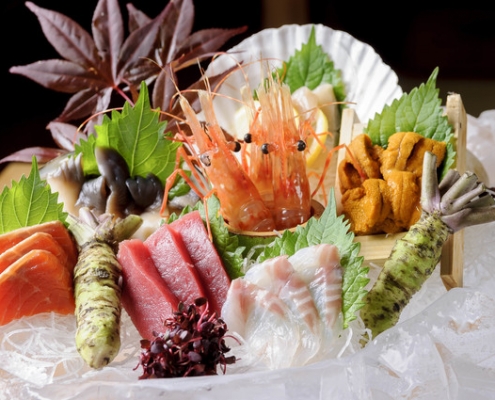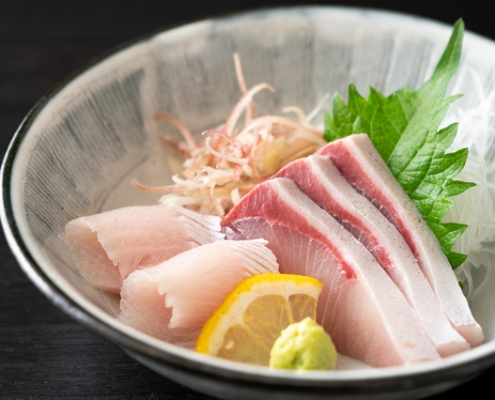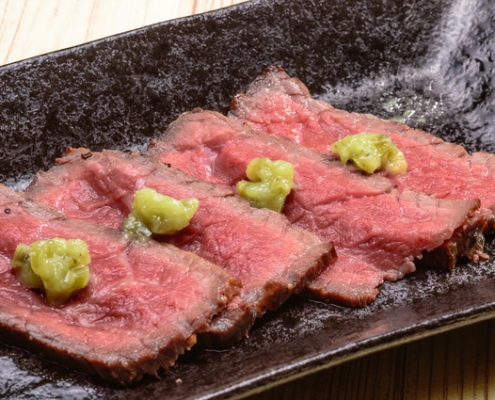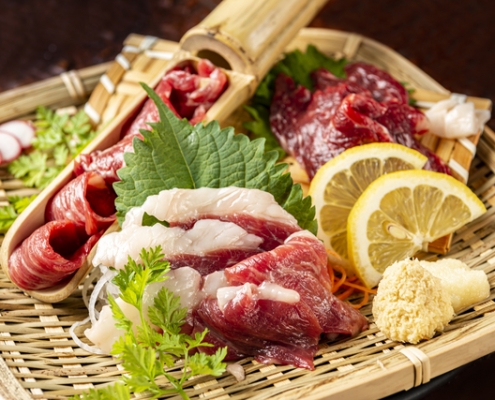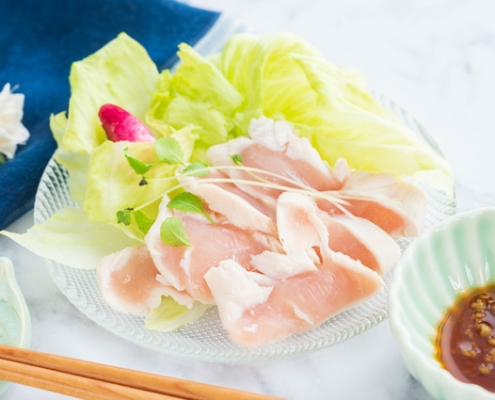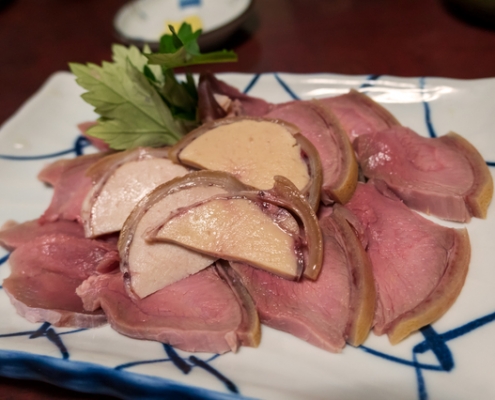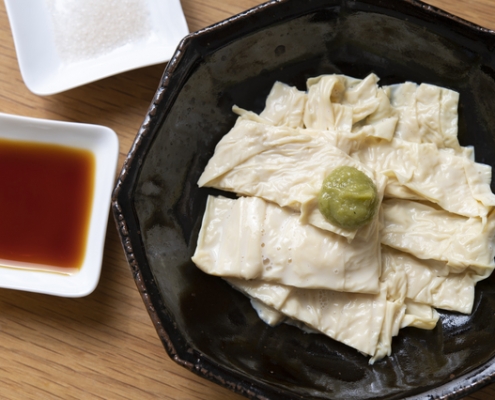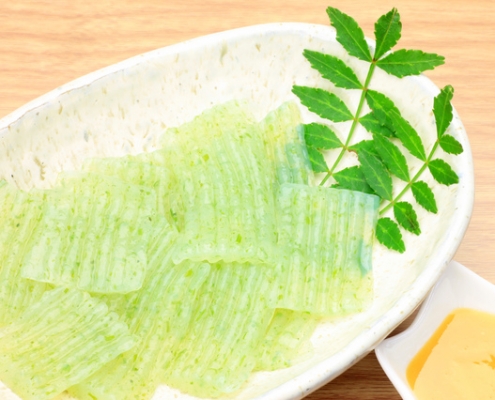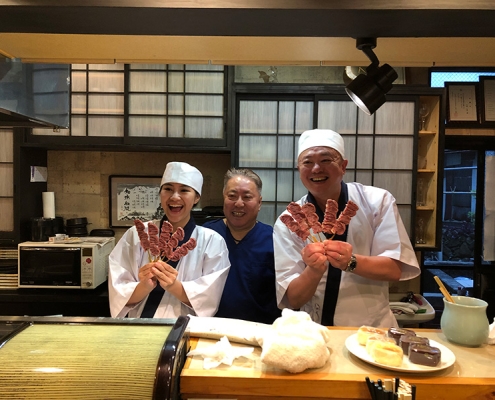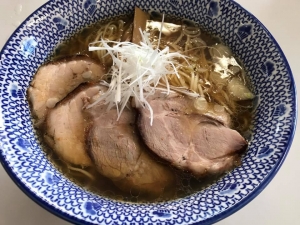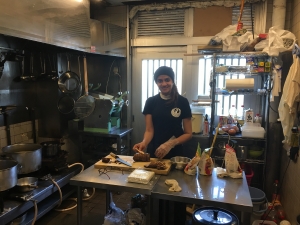Ultimate Sashimi Guide: Fish, Beef, Horse, Chicken, and Goat?! How Many Kinds of Sashimi in Japan?
August 25th 2020 Updated
When you hear “Sashimi” you probably think of a small slab of raw salmon or tuna.
In general, it means food that has had the shell, bones, skin etc. removed after which it is sliced into pieces that can be eaten in one bite, usually with soy sauce and wasabi.
Katsuo (Skipjack tuna) etc. may be lightly seared over open flame, but in principal, sashimi is seafood eaten raw.
Here are the results of an online questionnaire on the top ten sashimi favorites of Japanese people.
No.1 Salmon
No.2 Akami Maguro (tuna)
No.3 Hamachi (young yellowtail)
No.4 Maguro Toro (fatty tuna)
No.5 Ika (squid)
No.6 Ebi (prawn)
No.7 Tai (sea bream)
No.8 Hotate (scallops)
No.9 Hirame (summer flounder)
N0.10 Aji (horse mackerel)
However, it’s not only seafood that is prepared and eaten this way in Japanese food culture, but raw beef, horse, chicken and goat can be prepared by professional chefs and eaten as sashimi.
These are their proper sashimi names: Gyusashi (beef sashimi), Basashi (horse sashimi), Torisashi (chicken sashimi) and Yagisashi (goat sashimi).
Today we also would like to talk about non-seafood sashimi.
Gyusashi (Beef Sashimi)
In Japan, restaurants must follow the regulations provided by the Japanese Ministry of Health, Labor and Welfare (MHLW), in order to serve beef sashimi.
These regulations stipulate that the surface of the beef be heated to 60°C for two minutes, allowing it to be cooked to a depth of 1cm or more. Also, it must be prepared and cooked by a chef with the training necessary to ensure the safety of the raw meat.
Beef sashimi is often on the menu in yakiniku restaurants.
Most people like it with soy sauce, wasabi, salt, and ponzu.
Basashi (Horse Sashimi)
Horse sashimi is commonly eaten with grated ginger, grated garlic, chopped leeks etc., and dipped in soy sauce. Kumamoto in the Kyushu island, located southwest of the main island Honshu, is famous for producing horse meat, and is said to produce 40% of the horse meat eaten in Japan.
Compared to other livestock, like cows or pigs, horses are said have a high body temperature, around 40 degrees Celsius, which may mean they are less prone to certain bacteria.
After processing, the meat must be frozen at -20 degrees for 48 hours or more. Restaurants serving horse sashimi must also follow safety regulations, such as trimming the surface of the meat etc., which makes horse sashimi the safest meat sashimi.
Torisashi (Chicken Sashimi)
This is a local dish of Kyushu island,the chicken is lightly seared and then eaten with sesame oil and salt, or soy sauce containing garlic, ginger and yuzu pepper.
Unlike beef or horse sashimi, chicken is supposed to be cooked, so there are no national hygiene standards on how to serve it raw.
We recommend eating it only in a restaurant where the chef is known for having high standards of hygiene. You might be surprised to see that chicken sashimi is sold even in supermarkets in Kyushu island, but this is a dish that has been a local favorite for a very long time.
Yagisashi (Goat Sashimi)
Goat sashimi is a local delicacy in Okinawa island in the East China Sea and can usually only be eaten there.
The surface of the meat is lightly roasted after which it is eaten with a sauce of soy sauce, vinegar and ginger.
It is only served when fresh goat meat is available, so restaurants may not always have it on hand. As with chicken meat, goat meat is supposed to be cooked and has no national hygiene standards for its preparation as sashimi. We recommend eating it only in a restaurant where the chef is known for having high standards of hygiene.
Is is really safe?
Is it really safe to be eating these different kinds of raw meat? You might wonder about this, but in reality, not all Japanese people eat raw meat.
Generally speaking, eating raw meat does come with the risk of food poisoning, so we recommend that children, elderly people, and others with compromised immune systems refrain from eating raw meat. However, in Japan, experienced fish and meat producers and professional restaurant chefs have built up a system of trust, which, along with strict national hygiene standards, allows them to safely provide this kind of cuisine made of raw meat.
Please be careful, however, because there is risk of food poisoning if an amateur were to make sashimi that looks fine, but was not prepared properly.
Vegetarian Sashimi
Besides meat sashimi, Japan has Yubasashi (tofu skin sashimi) made from tofu and eaten with soy sauce and wasabi, and Konnyaku sashimi, made from Konnyaku jelly and eaten with vinegared miso.
These are popular as vegetarian sashimi.
Generally, sashimi refers to raw seafood, but in modern day Japan it can also mean any bite-sized piece of food that is eaten with some kind of sauce, usually soy sauce.
We hope you enjoyed this introduction to sashimi!
What would you like to know more?

Culinary Schools in Japan
Tokyo Sushi Academy
The first and the most popular sushi school in the world.
Japan Culinary Institute
Japanese culinary training including sushi, kaiseki, yakitori, wagashi and more.
Miyajima Ramen School
More than 1,000 graduates from over 50 countries.
International Ramen School
Ramen study program combined with OJT

